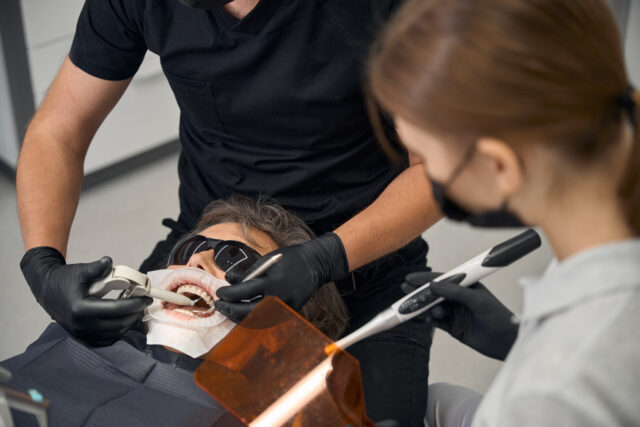Laser dentistry has emerged as a transformative force in the field of dental care, offering a range of benefits for both patients and practitioners. By harnessing the power of focused light energy, dentists can perform a variety of procedures with greater precision, efficiency, and patient comfort.
At the heart of laser dentistry lies the concept of minimally invasive dentistry. This approach emphasizes the importance of preserving as much healthy tooth structure as possible while effectively addressing dental issues. Lasers, with their ability to target specific tissues with pinpoint accuracy, align perfectly with this philosophy.
Key Considerations for Effective Laser Use
By understanding the intricacies of laser-tissue interaction, dentists can optimize treatment outcomes and minimize potential side effects. This knowledge empowers practitioners to deliver safe, effective, and minimally invasive dental care. Let’s dive deeper into key expert considerations for successful laser use, such as tissue reading, tip-to-tissue technique, time in the sulcus, and laser speed.
- Read the Tissue:
- Individualized Approach: Recognize that each patient’s tissue responds differently to laser energy due to variations in chromophore concentration and skin tone.
- Beyond Preset Settings: While preset settings can be a starting point, it’s essential to adapt them based on the specific clinical situation.
- Understanding Tissue Response: Familiarize yourself with the thermal effects of laser energy at different temperatures to avoid unintended consequences.
- Tip-to-Tissue Technique:
- Optimal Fiber Placement: Position the laser fiber tip directly against the target tissue to ensure efficient energy delivery.
- Cross-Hatching Motion: Employ a methodical cross-hatching motion to maximize coverage and treatment efficacy.
- Coagulum Management: Monitor the laser tip for coagulum buildup and clean it regularly to prevent overheating and inefficient energy transfer.
- Time in the Sulcus:
- Tailored Approach: The duration of laser exposure should be adjusted based on factors such as pocket depth, disease severity, and patient-specific characteristics.
- Avoid Rushing: Slow, deliberate movements are crucial to ensure thorough treatment and minimize tissue damage.
- Laser Speed and Technique:
- Controlled Delivery: Avoid rapid, uncontrolled movements that can lead to inconsistent energy distribution and suboptimal results.
- Patient Comfort: Prioritize patient comfort by using gentle, precise techniques.
Additional Insights
- Initiating the Tip: While initiating the tip can enhance laser-tissue interaction, it’s not always necessary for routine hygiene procedures. Consult local regulations and guidelines to determine the appropriate approach.
- Continuous Learning: Stay updated on the latest advancements in laser dentistry through ongoing education and training. The Academy of Laser Dentistry is an excellent resource for comprehensive information.
Beyond the Basics: Advanced Considerations
As laser dentistry continues to evolve, dentists are exploring innovative techniques and applications. Some advanced considerations include:
- Laser-Assisted Periodontal Therapy (LAPT): LAPT offers a minimally invasive approach to periodontal treatment, reducing discomfort and accelerating healing. By precisely targeting diseased tissue, LAPT can minimize collateral damage to healthy tissue, leading to faster healing times and improved patient outcomes.
- Photodynamic Therapy (PDT): PDT utilizes a combination of light-activated photosensitizing agents to target and destroy bacteria, making it effective for treating periodontal disease and other oral infections. This non-invasive therapy can be particularly beneficial for patients with systemic conditions or those who are sensitive to traditional antibiotic treatments.
- Soft-Tissue Laser Surgery: Lasers can be used for a variety of soft-tissue procedures, such as frenectomy, gingivectomy, and crown lengthening, offering precise and efficient treatment. Laser surgery often results in less bleeding, faster healing times, and reduced post-operative discomfort compared to traditional surgical techniques.
As laser dentistry continues to evolve, the future of dental care looks increasingly bright. By embracing this cutting-edge technology and mastering its intricacies, dentists can future-proof their practices and offer patients a new era of minimally invasive, patient-centered care. The possibilities are endless, and the potential for positive impact on oral health is truly inspiring.
SOURCES: The Open Dentistry Journal, Dentistry Journal, Journal of Lasers in Medical Science, Dentistry IQ





